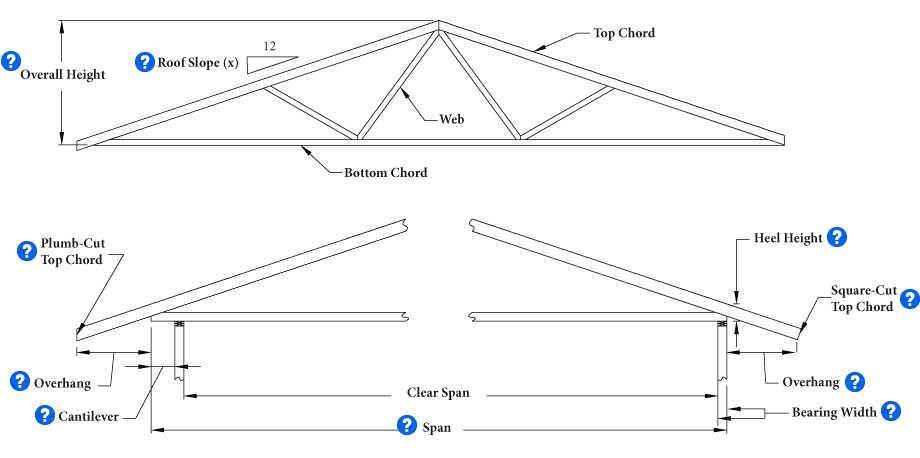
Hover over ? bubbles to read details.
Truss Description
- Span – The length of the bottom chord.
- Overhang Length – The horizontal distance from the end of the bottom chord to the end of the bottom, outside edge of the top chord.
- Cantilever – The horizontal distance that the bottom chord extends beyond the outside edge of the bearing.
- The End Cut of the Truss – Specifies whether a plumb cut, square cut, or custom cut is required. (Refer to drawings above).
- Square Cut – Cut is square to the Top Chord Slope.
- Plumb Cut – The vertical dimension at the end of the Overhang. (Cut is perpendicular to horizontal.)
- Heel Height – The vertical distance from the bottom of the bottom chord to the top of the top chord, located at the end of the bottom chord.
- Roof Slope – The vertical rise, in inches, per 12-inch horizontal run.
- Bearing Width – The width of the supporting surface. (Specify the requirements for the truss bearing surface.)
- Overall Height – The total vertical distance from the highest point of the top chord (usually the peak) to the bottom edge of the lowest bottom chord (this does not include the overhang).
Truss Specifications
- Quantity – The number of trusses can easily be determined, as they are usually evenly spaced at 24” or 48” on center (O.C.).
- Design Load – The top Chord Live and Dead Loads, Bottom Chord Live and Dead Loads, Wind Loads, and any other loads the truss may experience.
- Gable Ends – The options include structural or non-structural, girts or nailers, plywood or OSB sheathing, window openings, and dropped top chord.
- Type of Truss – Specify the type of truss required; scissor, attic, parallel chords, floor, etc.
- Special Trusses – Specify all the dimensions, Cantilever conditions, heel height requirements, etc. for each truss.
